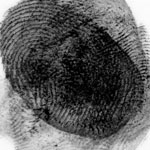Week #15 was focused on the topic of simultaneous impressions and latent print distortion. This was a great week for this topic as the students were fresh off last week’s topic of ACE-V methodology and documentation.
The following topics/concepts were covered, discussed and applied during Week #15.
- How the surface and substrate can affect the latent impression
- How developments techniques can affect the latent impression
- How the skins responds/reacts to pressure(elastic deformation)
- What causes the skin to react in a predictable way(structure of the skin and hand)
- What is meant by “Stick Zone”, premature and gross slip
- The effects of vertical pressure on the impression
(deposition pressure / compressive stress)
- The effects of lateral pressure/movement on the impression (tangential stress)
- Types of lateral pressure/movement (shearing stress and torque)
- How the ridges react to this type of movement
(imbrication / compression / expansion)
- Tonal reversals and what causes them
- The difference between discrepancies and distortion or variation
- Understanding the terminology Red Flags
- Understand the terminology used when conducting simultaneous impressions
- Understanding simultaneous impressions past and present
- Understand current research on simultaneous impressions
- Understand the court rulings on simultaneous impressions
(review of Commonwealth v Patterson)
- Understand the logic behind the conclusion of simultaneity
- Understand the uses of simultaneous impressions in casework
- Understand the SWGFAST standard for simultaneous impression examination
- Practical exercises on simultaneous impressions
The students were able to get a much better understanding of simultaneous and distorted impressions by the end of the week. It was also beneficial to have them utilizing the newly acquired information to document the distortion for each impression and then use that to help them conduct their comparisons. The greater understanding the students gain on distortion, of all types, will eventually help them in understanding why latent prints appear as they do, their analysis of those latent prints, and how to explain distortion by the clues; thereby, giving the examiner the tools and vocabulary necessary to document and explain the variances that they experience in latent prints.

